I'm trying to design a switch box so that I can connect one input device (a Thrustmaster TH8A shifter for sim-racing) to two different outputs, with a single switch to change between them. I have a concept already, utilising the CMOS 4053 chip to achieve the switching using one master control line tied to each analog switch's control point. Is this a viable concept, and am I on the right path?

simulate this circuit – Schematic created using CircuitLab
In this schematic, the two connecting cables connect to the x and y points respectively, while the shifter lines are connected to the matching c points. I would likely be tapping the 5v supply from the USB cable input to power these ICs.
For a bit more info on the device in question, it uses a nine-pin connector, and operates in one of two modes for transmitting data; one is providing a USB output, which connects to a PC. The other is to a mini-DIN 6-pin connector, which connects to a matching point on a steering wheel base, and that device effectively forwards that information upstream to the connected console. The issue arises when I want to use the individual gear selection method on a PC game; for this case only, it is required to use the USB connection, rather than piping it through the wheelbase; while for the console usage (sequential or not), it is required to use the wheelbase connection.
I believe the mode is switched by the USB-output cable shorting two of the non-USB pins, and the shifter somehow detecting this to determine which output mode to use.
And no, I can't just switch some lines and not others, to the best of my knowledge; I'm not certain of the direction of all of the power and signals, or even what's on some of the lines (and given that two of them are a USB differential pair, that adds its own complexities). The cables effectively use the shield as a 10th pin to transmit ground, so those should be fine to connect to each other without switching.
Basically, I just want the digital equivalent of disconnecting one 9-pin cable and reconnecting the other, especially in the hope that I can one day tie it into another USB switch that I use (probably by tapping the signal LED of that off-the-shelf device and using that to drive the control line). Another concern is any potential clamping of the outputs, since that may cause shortfalls in voltage, and I'm not sure how that might affect it.
The alternate method that springs to mind is to implement each output port with a bus switch, and have the switch drive one enable port non-inverted and one inverted. However, bus switches are far harder to obtain easily where I am at the moment (retail stocks the CMOS 4053, but not any suitable bus switches I can find, making it hard to prototype and verify).
Most of my reference has come from this image (original source).